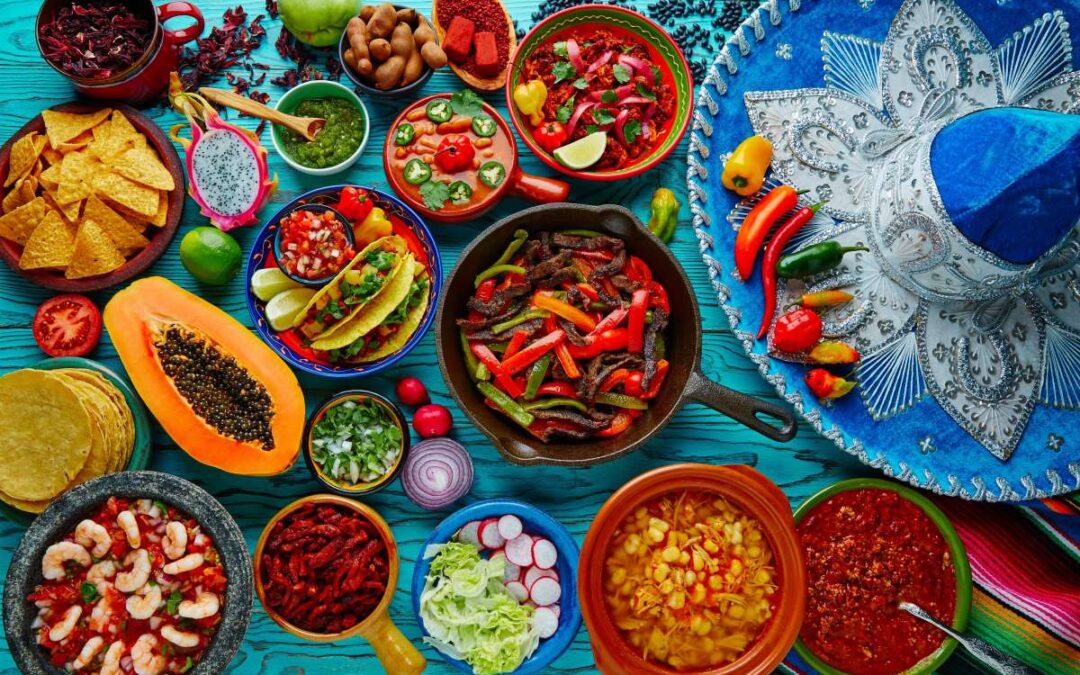Note: This post contains affiliate links. If you make purchases through these links, we will receive a small commission at no additional cost to you.
Click here to JUMP TO SECTION ON MEXICO DRINKS.
Mexican food is one of the most famous (and tastiest!) cuisines in the world. Spicy, rich, hearty, and satisfying, Mexican cuisine is great comfort food. Mexico is also famous for a wide variety of drinks. From mezcal and tequila, to the famous michelada, to horchata, mangonada, Mexican sodas, and Mexican beers, the range of Mexico drinks is amazing.
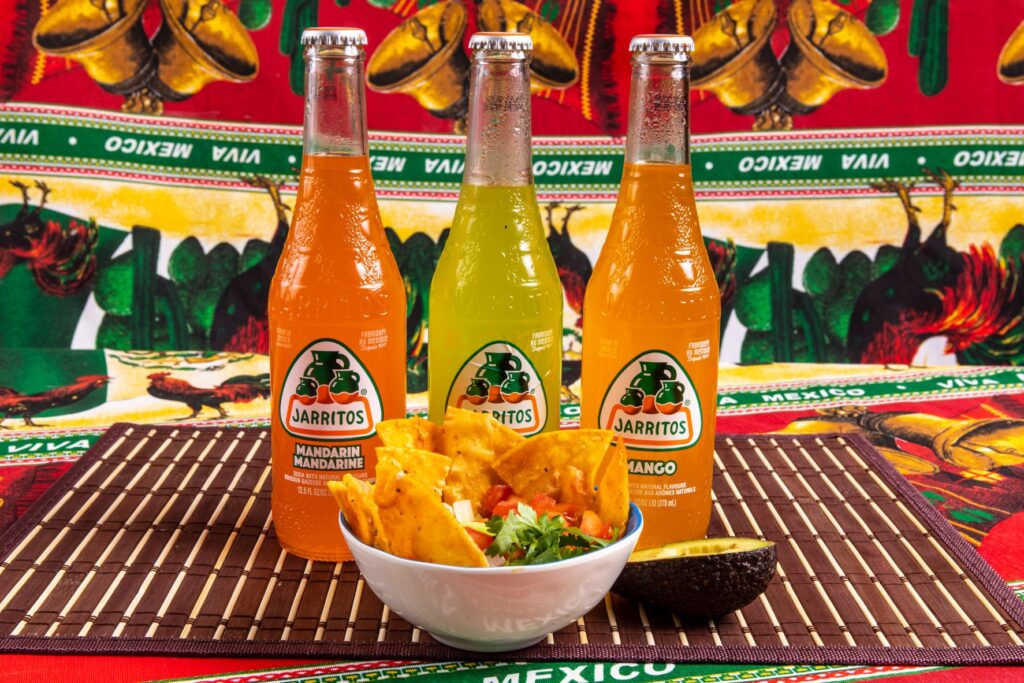 Mexican soda with chips & salsa. (c) Shutterstock / sockagphoto
Mexican soda with chips & salsa. (c) Shutterstock / sockagphoto
Table of Contents
Frequently Asked Questions about Mexican Food
What are some traditional Mexican foods?
Pozole, Tamales, and Mole are all foods based on corn and chilis, two crops that are native to Mexico. All of these dishes have been prepared in Mexico for many hundreds of years, long before the arrival of the Spanish.
Frequently Asked Questions about Mexico Drinks
History of Mexican Food
The history of Mexican begins thousands of years ago, long before the Spanish arrival, with the indigenous cultures of Mexico and the plants they were able to cultivate.
For example, corn has its origins in Mexico. Indigenous Mexicans first domesticated and began to farm corn almost 9000 years ago, and corn continues to be a staple of Mexican food today, in tortillas, masa, and other foods. Because they had few domesticated animals, indigenous Mexicans relied heavily on beans for protein. Chili peppers also have their origin in Mexico (chili is in fact a Nahuatl word) and have been cultivated in Mexico for approximately 6000 years.
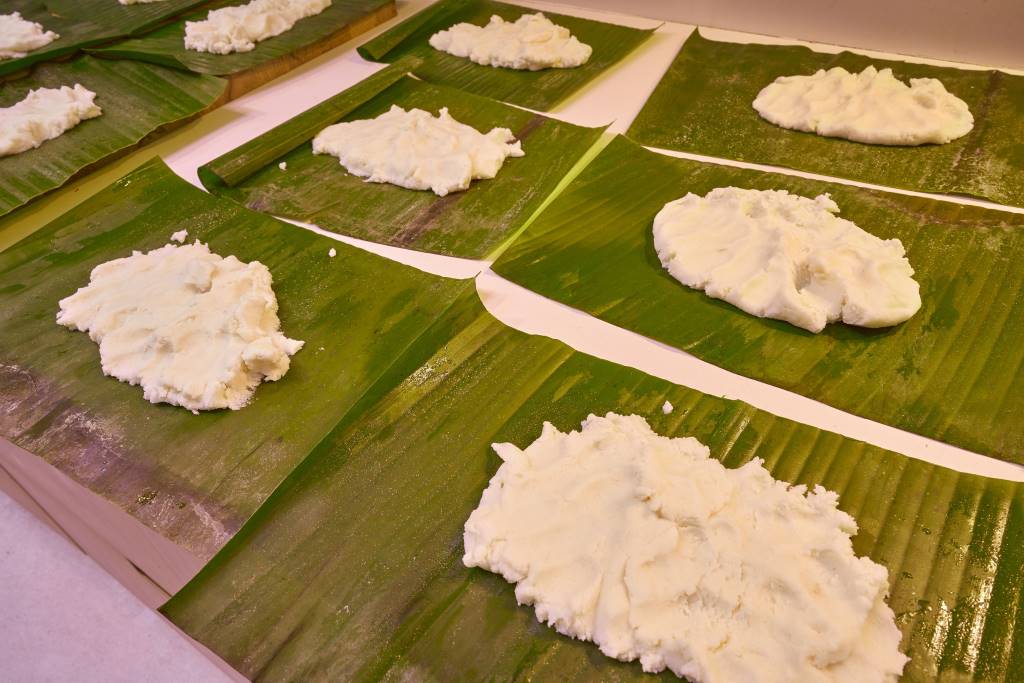
Masa, or Mexican cornmeal, in the preparation of tamales. (c) Shutterstock / lunamaria
When the Spanish arrived in the 16th century, they brought additional elements to Mexican cuisine: domesticated animals, which provided meat, as well as cheese, oil, rice, and garlic.
Mexican food today is still based on the indigenous foundation of corn, rice, and chilis, but the addition of meat, cheese, and oil has given it its current shape.
Mexican Food Favorites
Pozole
Pozole is a stew made from hominy and meat (usually pork), flavored with onion, garlic, chili, and avocado and garnished with lettuce or cabbage. Pozole comes in red, white, and green varieties, depending on the ingredients.
It is popular in many regions of Mexico and is served on festive occasions. Check out this pozole recipe.
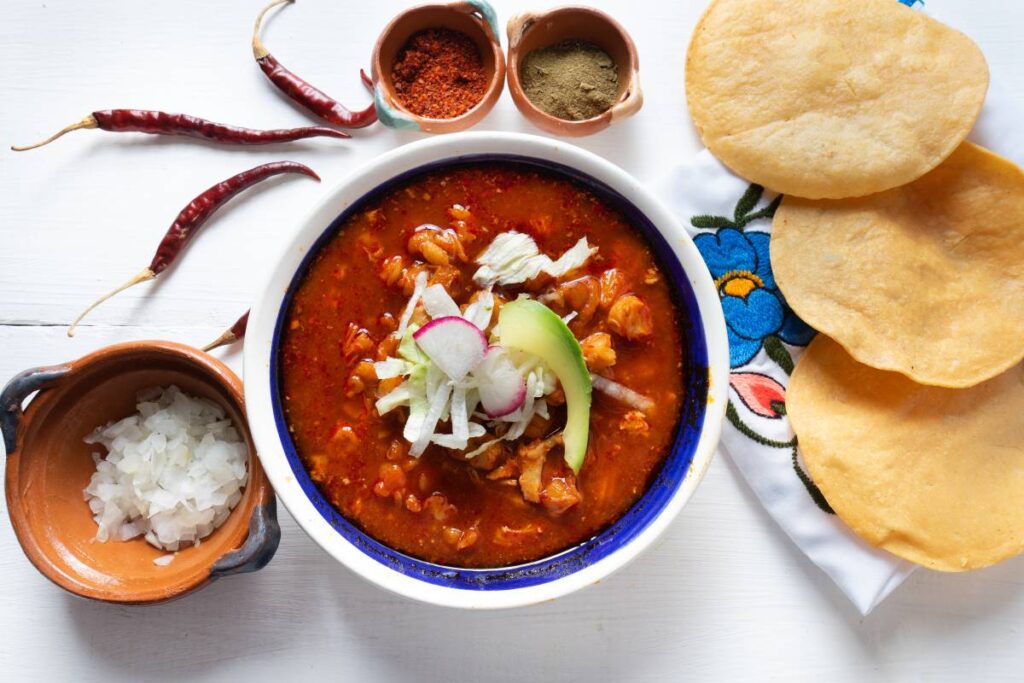
(c) Shutterstock / Guajillo Studio
Tamales
Mexicans have been eating tamales for thousands of years, and the word tamal itself comes from the indigenous Mexican language of Nahuatl. (It means “wrapped.”) Tamales are one of the best-known and most typical foods of Mexico. A tamal consists of masa dough which is steamed in a corn husk or banana leaf and filled with meat, cheese, or other fillings. Tamales can be either savory (the kind most Americans are familiar with) or sweet, in which case they are stuffed with fruit and have sugar and cinnamon mixed into the batter.
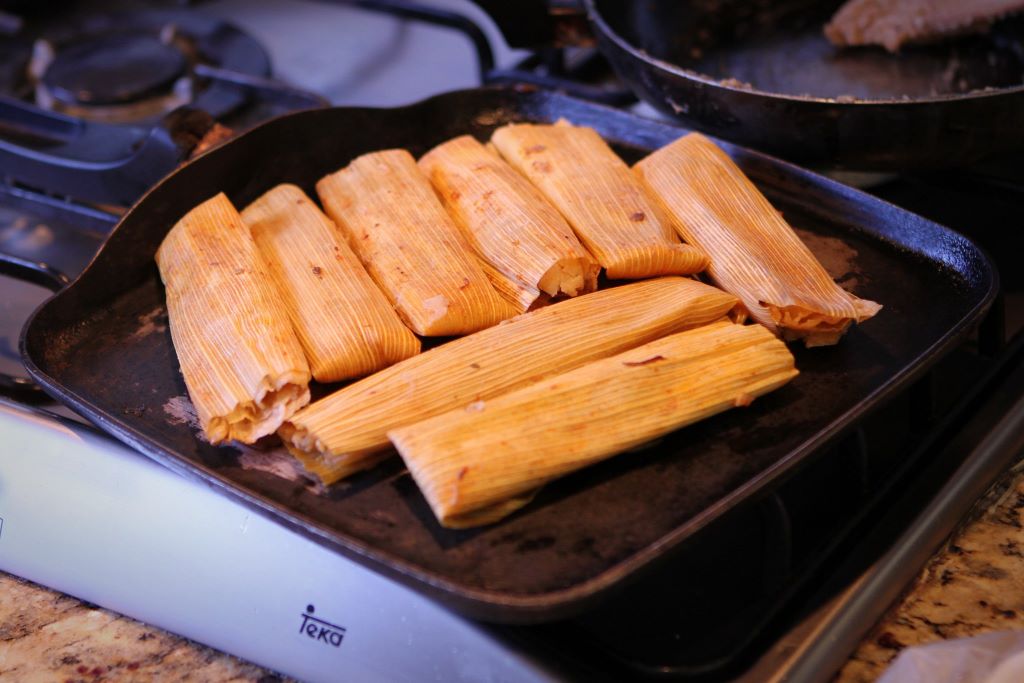
Tamales (c) Daniel Dionne / CC-BY-SA 2.0
Mole
The Nahuatl word mole is used to describe a wide variety of different dishes in Mexico. Almost all are rich sauces with a base of chili peppers (various kinds are used, including ancho and chipotle), spices, nuts, and fruits, that are served over some kind of meat. Some moles even contain chocolate.
With ingredients from four continents, mole is considered a symbol of mestizaje, the mixing of indigenous and European traditions that gave rise to the Mexican people.
Check out this recipe for Mole Poblano, one of the most common versions.
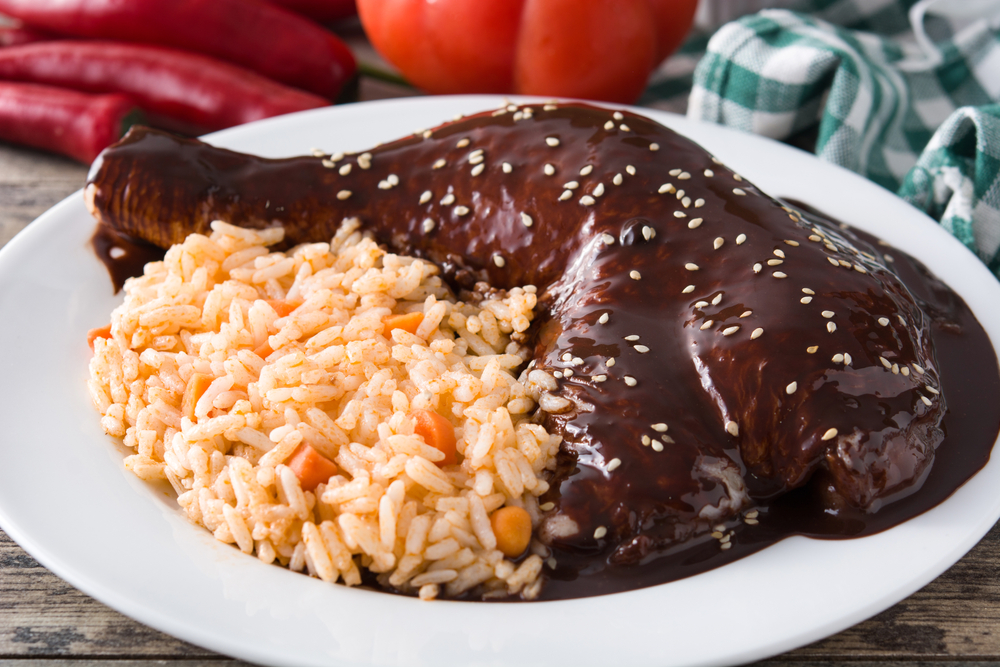
Mole Poblano with chicken and rice. (c) Shutterstock / etorres
Enchiladas
Mexican cuisine sometimes seems to be a quest to come up with every possible way there is to combine tortillas with a stuffing or topping (tacos, tostadas, burritos…). Enchiladas enter the mix with their own unique twist – tortillas are wrapped around a filling (usually meat or cheese) then covered with more cheese and a sauce (often a mole sauce) and then baked in the oven. Hearty, filling, and delicious!
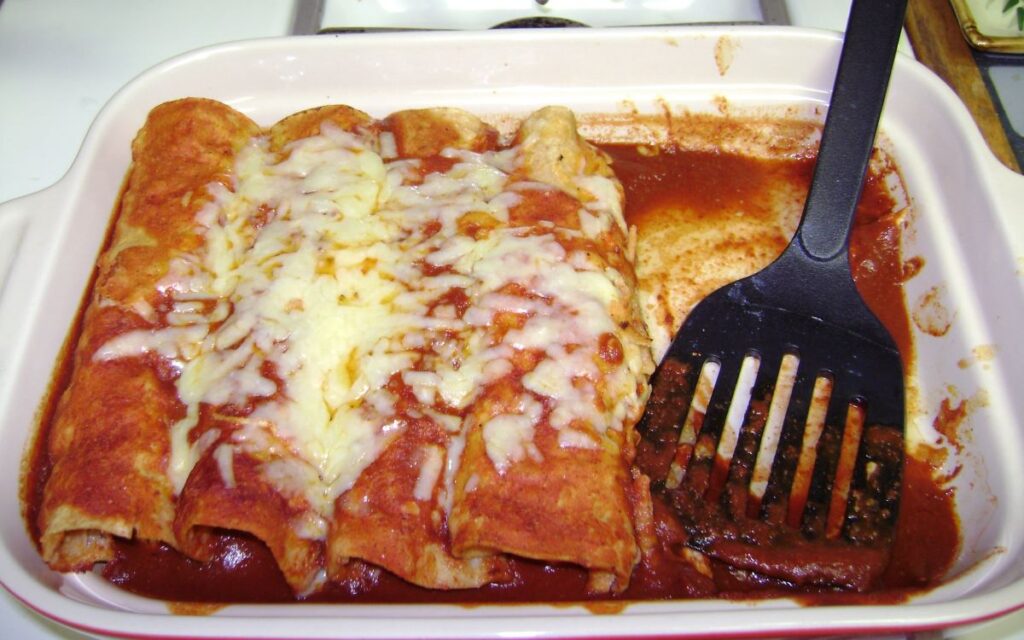
Homemade enchiladas (c) Ewen Roberts CC-BY-2.0
Elote
A street food favorite. Elote is grilled corn on the cob, with cheese, lime juice, chili, and mayonnaise. Simple, and delicious!
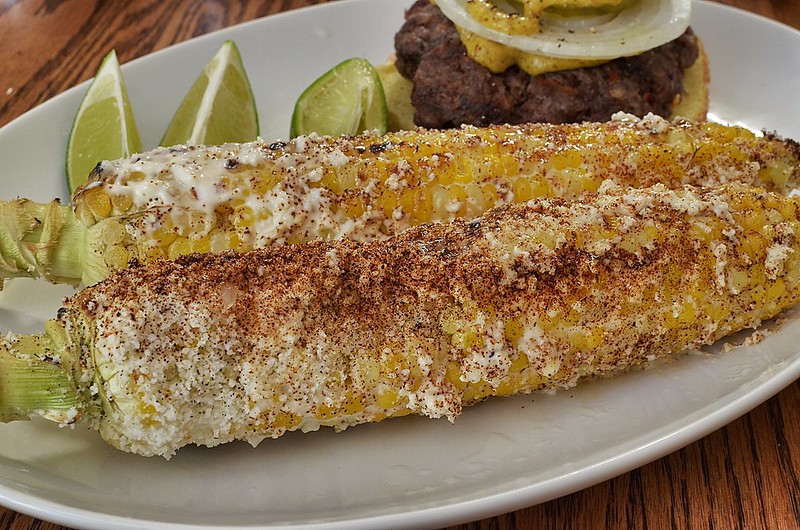
Elote with chili powder (c) Jeffreyw CC-BY-2.0
Chilaquiles
Breakfast of champions! Fried tortillas, salsa, chicken, queso fresco, and avocado — what’s not to like? And, chilaquiles is another dish with a Nahuatl name, emphasizing its deep roots in Mexico. A great way to start the day.
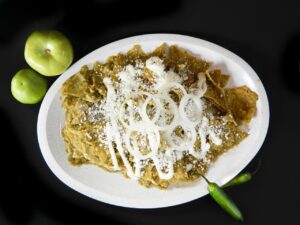
Chilaquiles (c) Pixabay / mktsnmuelarzate
Tacos
Last, but certainly not least, is the mighty taco. First in the hearts of Mexicans, and beloved around the world. A taco consists of a small corn or flour tortilla with some kind of filling on top, often meat, cheese, sour cream, vegetables, avocado, salsa, or all of the above. The tortilla is folded in half around the filling and eaten by hand. The varieties of tacos are almost endless.
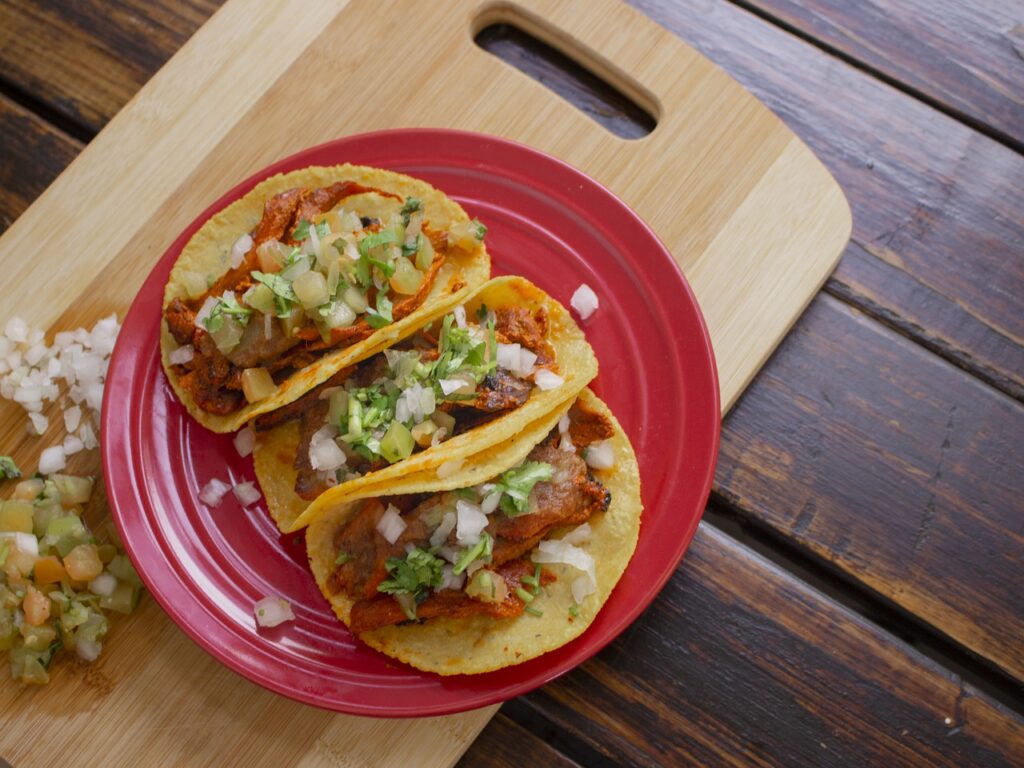
Photo by Don Marciano from Pixabay
Try it at home!
Try your hand at Mexican cooking with Pati Jinich’s bestselling guide.
Mexican Street Foods (and Where to Find Them)
Along with Thailand and Turkey, Mexico has one of the world’s great street-food cultures. No wonder food bloggers and even Michelin-starred chefs come from all corners of the globe to taste Mexico’s street food gems
Time to unbuckle your belt!
Tlacoyos
Made from corn masa, this oval-shaped dish is magic inside and out. It is stuffed either with broad beans, mashed beans, or requeson (a type of ricotta cheese), and topped with shredded cheese, cilantro, onion, and a scoop of fresh salsa.
Where to find them: In every street market in central Mexico and small stalls, from main cities to small towns.
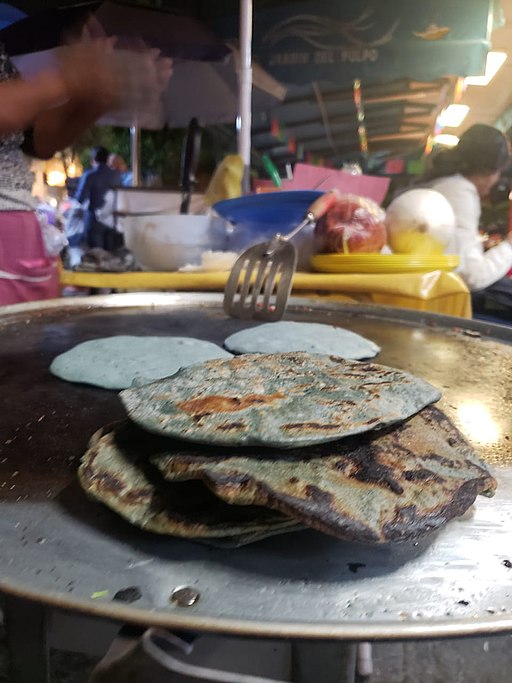
Tlacoyos in the market (c) Carloospadilla CC BY-SA 4.0
Pambazos
Names after the bread it’s made with, this sandwich is stuffed with stewed chorizo and potatoes and glazed with a (non-spicy) guajillo chili sauce. Garnished with shredded lettuce, shredded cheese, cream, and salsa in the middle.
Where to find them: In every street market in central Mexico.
Marquesitas
This super thin and crispy cylindrical crepe is comfort food at its best. The original flavor had only Emmental cheese, but now is combined with hazelnut spread. You can find other combinations like strawberry jam with cream cheese, or chocolate fudge.
These treats are easy to spot because their carts have huge pans in the shape of a waffle maker where they pour the batter, which instantly turns into this delicious dessert.
Where to find them: In Southeast Mexico at any square, or street, especially in Yucatan, where they’re originally from.
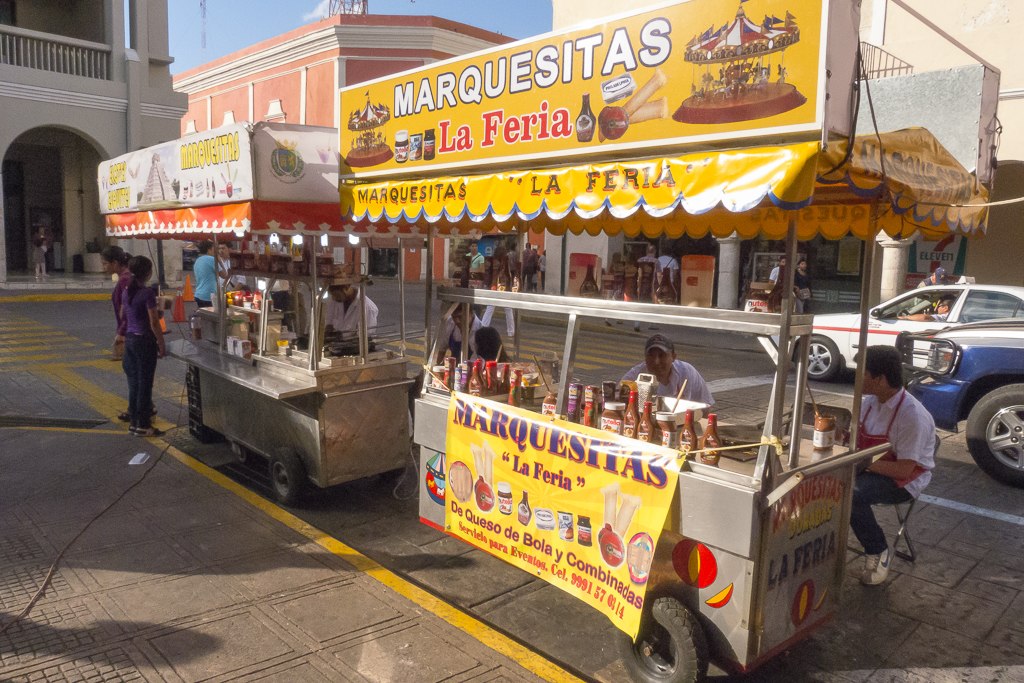
Marquesitas for sale on the streets of Merida (c) StellarD CC BY-SA 4.0
Cemitas poblanas
This Mexican sandwich takes its name from the “Cemita” bun that has a Spanish-Jewish background. It used to be stuffed with cactus or potato, but now a much more modern and fulfilling version includes shredded chicken, beef, or pork. No matter what the inside looks like, a traditional cemita will always have sesame seeds on top of the bun.
Where to find them: ‘Poblanas’ means Puebla — so that’s where to get them!
Grasshoppers
You might consider these a plague, but Mexico has turned them into a super healthy and tasty snack!
Chapulines are found especially during rainy season (May-July) in states like Morelos, Estado de Mexico, and Oaxaca, where they’re collected from alfalfa and corn plantations. They are boiled with salt, garlic, onion, and lime juice which gives them a salty-acidic taste. Looking for a touch of spice? Try the ones mixed with chile de arbol.
Where to find them: In markets. Look for the vendors carrying buckets of them.
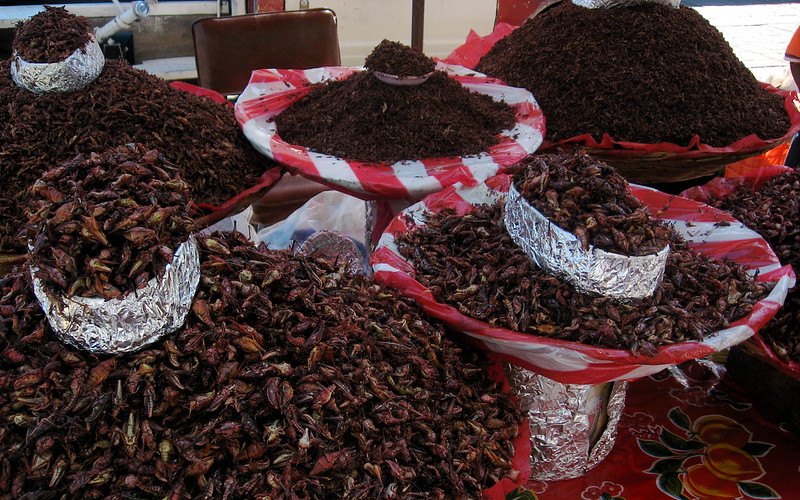
Grasshoppers for sale in the market (c) Katie Bordner CC BY 2.0
Try it yourself!
Learn how to make Mexican street food favorites with this stunningly illustrated guide. (Affiliate link)
Mexico Drinks: Tequila, Mezcal, and Pulque
One plant, three iconic drinks. The agave plant, a succulent native to the harsh, dry climate of of the Mexican highlands, has been used for centuries by native Mexicans as a food. The agave plant (or plants, really, since there are several species) are also the source of three drinks. While Tequila and Mezcal are more famous, pulque, which has pre-Hispanic origins, is much older.
Agave Plant: mother of Tequila, Mezcal, and Pulque Credit: Maxpixel.net CCO
Pulque
Pulque is a fermented drink made from the sap of the agave plant. It has a milky white color and a slight foam from the fermentation process. Prior to the arrival of the Spanish in Mexico, pulque was considered a sacred drink, but it came to be more widely consumed during the colonial period. The consumption of pulque entered a period of decline as tastes switched to beer, but there has recently been a campaign to revive it and increase consumption.
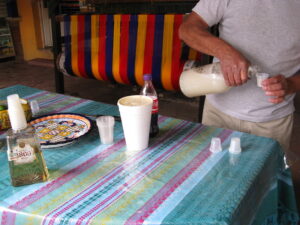
A man serving pulque (c) Christian Cordova / CC BY 2.0
Mezcal
While pulque is fermented, mezcal is distilled — but both are made from the agave. (For comparison, wine is fermented, while brandy is distilled, but both are made from grapes.) Mezcal was first made following the arrival of the Spanish, who brought distillation techniques. Mezcal can be produced in any part of Mexico and using any kind of agave plant. Most mezcal is produced in Oaxaca.
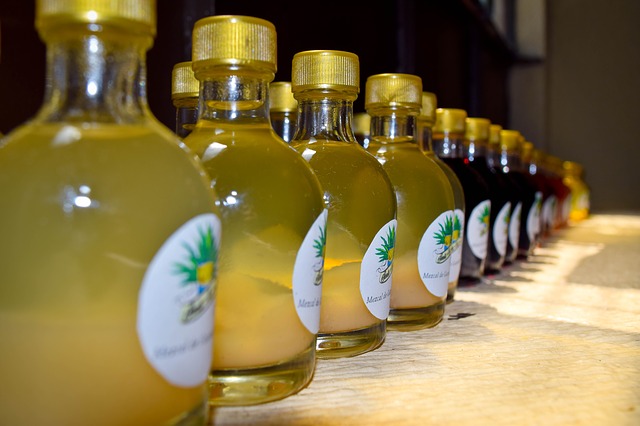
Bottles of Mescal (c) Angel Chavez, from Pixabay
Tequila
Perhaps the best known of Mexican liquors, Tequila is a kind of mezcal that can only be produced in certain regions and using a certain kind of agave. Specifically, tequila can only be produced in the state of Jalisco and in certain limited areas of four other states. In addition, Tequila can only be produced using the blue agave.
Today, the designation of “Tequila” can only be given to product from those areas. There are more than 100 distillers making more than 900 different brands of tequila.
Mexico Drinks: Cocktails
Margarita
This best-known Mexican cocktail is famous for a reason: it’s tasty, fun, and refreshing. The classic recipe contains tequila, triple sec, lime juice, and simple syrup served in a salt-rimmed margarita glass (or whatever else is handy). The classic is on the rocks, but it is served frozen at least as often–and there are dozens (hundreds?) of variations, from strawberry to mango to spicy papaya to pretty much anything else you can think of.
Michelada
If a Bloody Mary and a beer had a love child, it would probably taste something like a Michelada. Prepared with light Mexican beer, Clamato or tomato juice, Worcestershire sauce, lime, and various chilis or hot sauces, this Mexican drink is spicy and highly drinkable. Who knew a beer cocktail could be this good?
Paloma
It starts like a margarita and finishes like a greyhound: tequila, lime juice, and grapefruit juice, or more commonly, a grapefruit-flavored soda like Jarritos or Fresca. Put it in the obligatory salt-rimmed glass, and enjoy!
Mexico Drinks: Traditional Drinks
Have you ever tried a beverage made out of corn, rice, or guava? In Mexico, these, and many more ingredients are the base for tasty and refreshing drinks found in many markets across the country.
Just as with Mexican food, Mexico drinks also keep alive the pre-Hispanic cultural heritage of Mexico. That’s why many of them are still made with traditional recipes and techniques that vary according to the region where they’re produced.
Aguas Frescas de Sabor
Fresh, tropical ingredients blended with water, sugar, and ice.
When it comes to cold natural drinks, Mexicans take it to the next level. Aguas frescas start with any sweet, fresh, seasonal fruit, flower, or leaves, blend them with water, sugar, and lots of ice, and turn them into a refreshing and revitalizing drink.
Guava, lime with chia seeds, cucumber, or strawberry with chunks of guava? If it’s fresh and tropical, you can probably find it in an agua fresca.
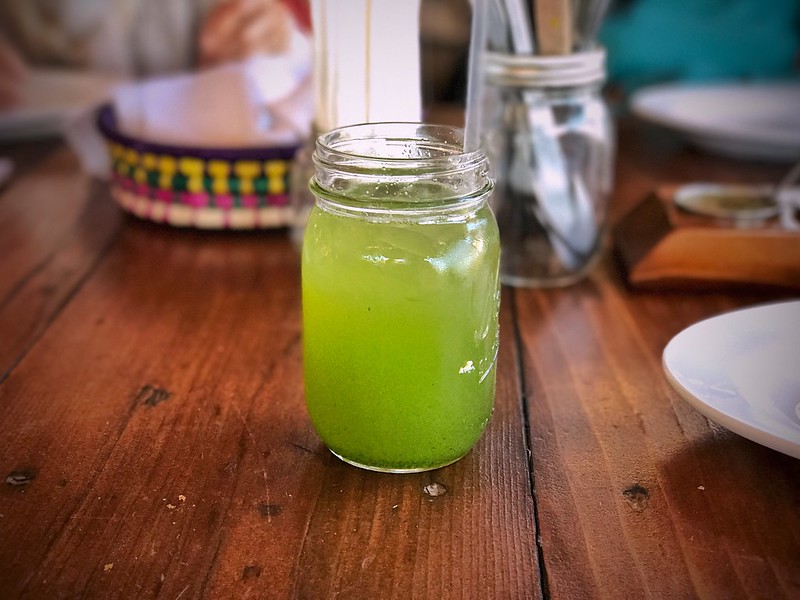
Agua Fresca (c) T Tseng CC-BY 2.0
Horchata
And of course, the jewel of the crown. The agua de horchata: a rice, and cinnamon-based ‘agua fresca’, sweetened with condensed milk. A must in any local market!
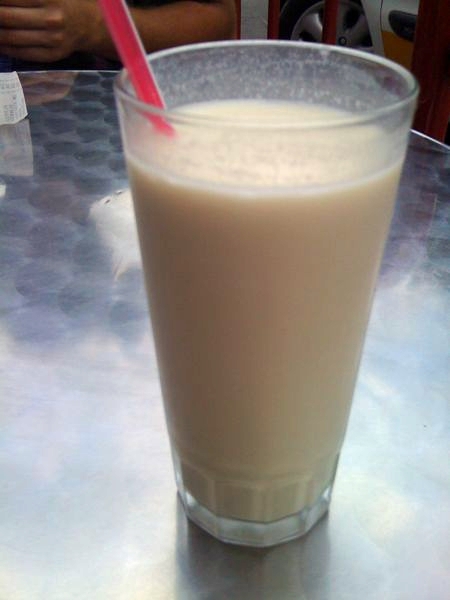
Glass of Horchata (c) Jorge Diaz CC-BY-SA 2.0
Atole
A corn-based breakfast drink that is also a popular choice during Day of the Dead celebrations.
With more than ten thousand years of history (yeah, you read that right!) this thick and warm beverage made out of corn dough is the yin to the yang of every tamale.
Across the country, you can find different flavors such as pineapple, chocolate, cinnamon, or guava, but since it’s one of the most common beverages in Mexico, flavors are infinite.
The base will always be corn dough, however, it can be mixed with water or milk bringing a different taste and consistency.
Atole is not only delicious, but also affordable: a cup will cost around 1USD on the street or in markets.

Atole (c) Ray_explores CC BY 2.0
Pozol
A traditional drink made from a base of fermented corn, flavored in many different ways.
Imagine you’re in the hot, humid, tropical weather of Riviera Maya craving something to put your thirst at ease. Well, Pozol is the answer.
This drink, found mostly in southeast Mexico like Chiapas, Tabasco, and Yucatan, is another pre-Hispanic drink made out of… guess what? Corn! Sweetened with piloncillo, a Mexican brown sugar, has the perfect lightness and freshness for your thirst.
It’s also a powerful source of fiber, calcium, and protein.
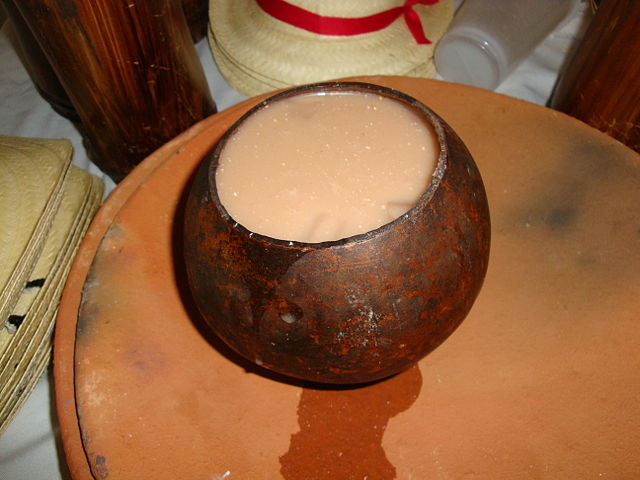
Pozol in a jícara cup (c) Alfonsobouchot GNUFDL
Tejate
A traditional cold drink made with a corn and cacao base.
Also known as the “drink of the gods”, this light and fresh beverage from Oaxaca is loaded with history and flavor.
Its preparation is completely artisanal, from the grinding of corn and cacao that will turn into a paste, and stirring it with cold water inside a huge clay pot. However, it’s the rosita de cacao, a flower that grows in the region of Valles Centrales, that brings the final and distinctive taste.
Enjoy it in a colorful jicara, a traditional cup made out of dry squash.
Mexican Hot Chocolate
Hot chocolate, but somehow better. Is it the cinnamon? The vanilla? A hint of chili powder? Whatever it is, it makes sense that the world’s most delicious hot chocolate comes from the home of chocolate…
Mexico Drinks: Mexican Sodas
Mexicans drink more soda per capita than any other country on Earth. Way more, in fact: they beat Americans, who are in second place, by 40%. The average Mexican drinks 43 gallons of the sweet and fizzy stuff every year! Some of the most common brands are Boing, Chaparritas, Jarritos, Lulú
If you really want to blend in like a Mexican in a taqueria, these are the drinks to go for. All of these brands have 100% Mexican background manufacturing, and they have a place deep in the heart of locals — especially the ones that were born in the 60s and 70s.
Some of them have since been acquired by major international brands, but they have stayed true to local tastes, with flavors like tamarind, fruit punch, pineapple, guava, and grape.
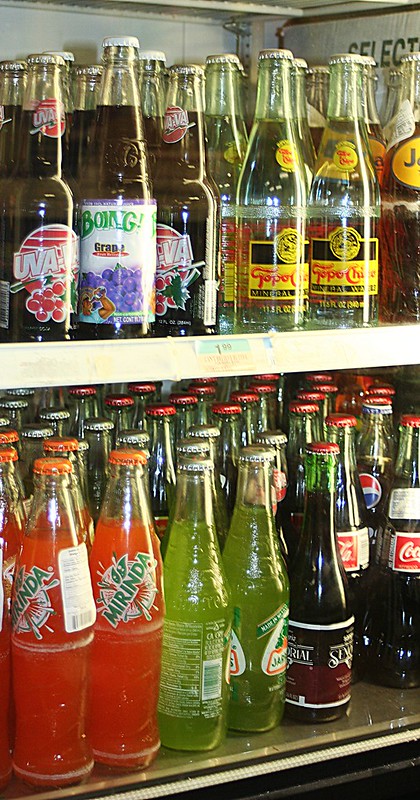
Mexican Sodas in a Refrigerator (c) LRD615 CC-BY-SA 2.0
Mexican Coke
While Coca-Cola obviously has its origins north of the border, Mexican Coke has attracted a devoted group of aficionados who prize it for its use of real sugar, rather than high-fructose corn syrup (which is used in the American version). Coke has an interesting history in Mexico: former Mexican President Vicente Fox spent much of his business career working for Coca-Cola in Mexico, rising from a position as a delivery driver to become the president of Coca-Cola Mexico. And he must have done a good job, since Coke is the most popular soda in Mexico!
Mexico Drinks: Wine
Move over, Argentina and Napa Valley. Mexico holds the record for the earliest production of wine in the New World.
Wine plays an important role in Spanish culture, in both a religious and social context. The early Spanish colonists therefore could not afford to be without it, and the time and expense of transporting wine from Spain was prohibitive.
For that reason, in 1595, Don Lorenzo Garcia asked King Philip II of Spain to grant him a parcel of land for the planting of vines and the making of wine. In 1597 (mail took a while in those days), he got his answer, and the winery now known as Casa Madero was established.
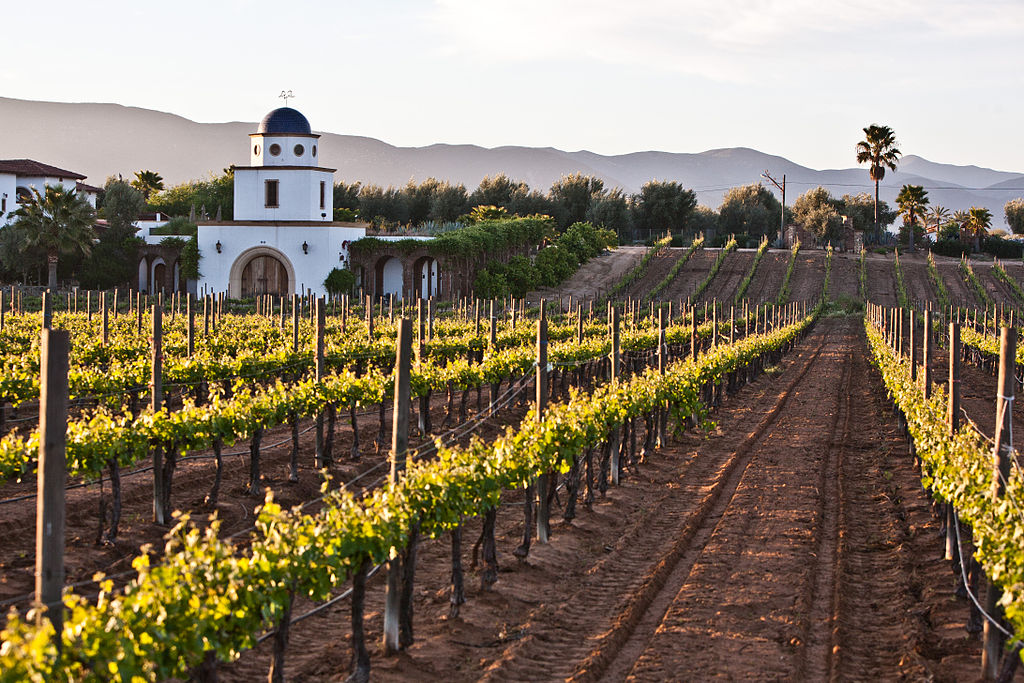
Winery in the Guadalupe Valley © Tomas Castelazo, www.tomascastelazo.com / Wikimedia Commons / CC BY-SA 4.0
Winemaking thrived in Mexico for a century, but in 1699, Charles II prohibited the production of wine in the New World in order to support the winemakers of Spain proper. Following Mexico’s independence, however, the industry revived.
Today, about 90% of Mexican wine is made in Baja California, which has a climate that allows the production of the same varietals grown in California. Some wine is also produced in the central highlands.
Wine still has a long way to go in terms of popularity in Mexico; the average Mexican drinks only two glasses a year—quite a contrast with the 163 liters of soda consumed by the average Mexican annually. Still, Mexican wines are improving and starting to gain some recognition at the international level.
There are now many wine festivals and other events in Baja California, and wine tastings of Mexican wine are organized in tourist hotspots like Cancun.

